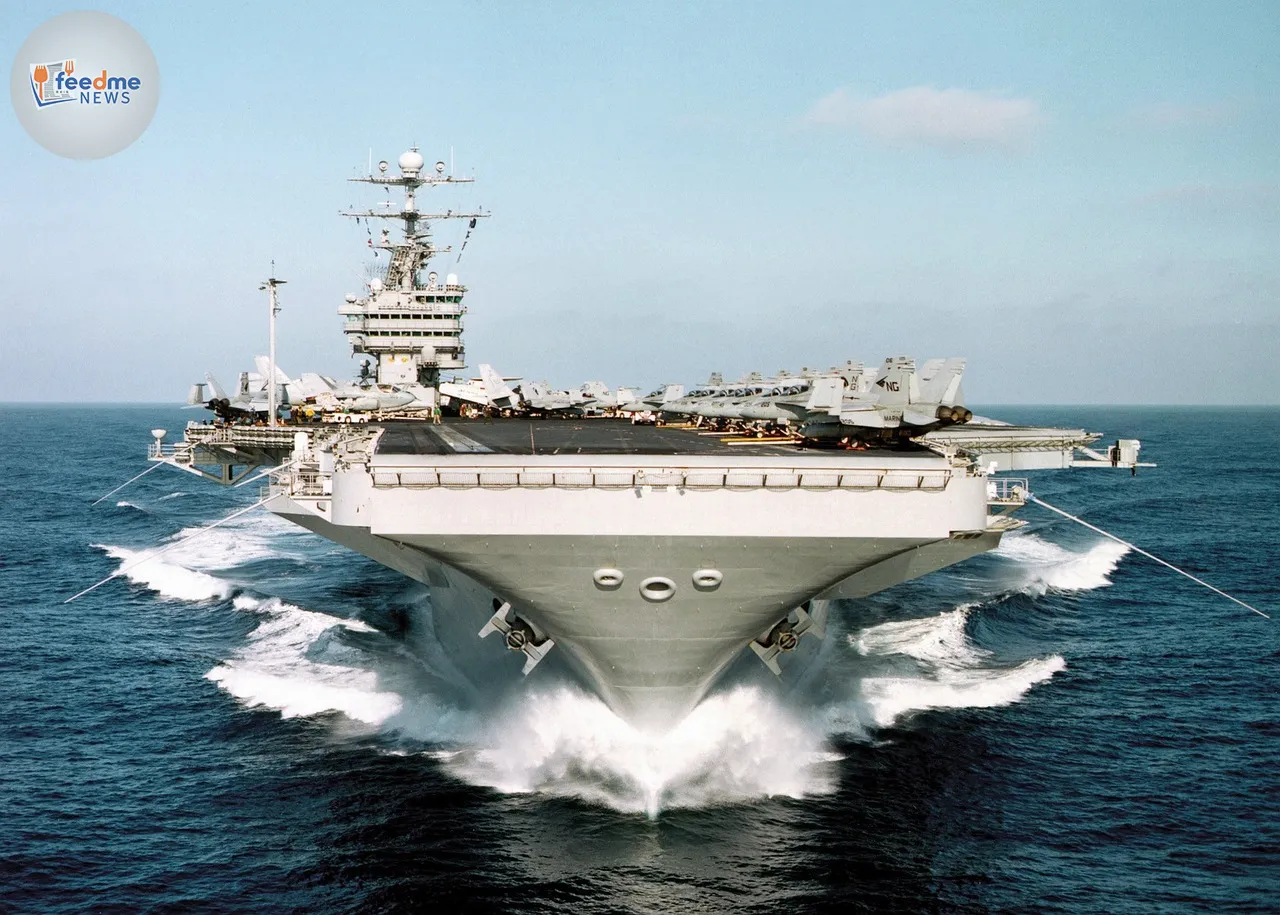The United States sent its newest aircraft carrier, the Gerald R. Ford, into the Caribbean as Venezuela announced a nationwide military mobilisation, sharpening tensions in a region already on edge. The BBC reported the carrier group’s arrival, noting the Ford’s status as the world’s largest warship. Hours earlier, Venezuela’s defence minister, Vladimir Padrino López, said the country would place its full military arsenal on alert, including militia forces and almost 200,000 soldiers, according to the Washington Post. The twin developments drew global attention because they involve one of the most powerful symbols of US naval strength and a force-wide posture shift in a neighbouring state. While neither report detailed a direct link between the two moves, their timing underscored rising unease across Latin America and the Caribbean. Governments, markets and residents will now watch for signs of further escalation or diplomatic outreach.
The BBC reported the carrier group’s arrival in the Caribbean on 12 November 2025. The Washington Post published the comments by Venezuela’s defence minister late on 11 November 2025. The Ford entered Caribbean waters; Venezuela’s mobilisation order applied across the country.

Gerald R. Ford carrier group steams into the Caribbean
The US Navy’s Gerald R. Ford carrier group arrived in the Caribbean, the BBC reported. The Ford leads the newest class of US carriers and stands as the world’s largest warship. Carrier strike groups project air power, support maritime security, and reinforce alliances. The BBC report did not outline a schedule, mission details or expected duration of the deployment.
US carriers serve as visible signals of intent and capability. Their presence often aims to reassure partners and deter potential adversaries. The Ford can host a large air wing and sail with escort ships that provide air defence, anti-submarine screening and logistics. The BBC report focused on the group’s entry into the Caribbean and its significance rather than the full composition or the group’s tasking.
Caracas orders a full-force posture shift
Venezuela’s defence minister, Vladimir Padrino López, said the country would place its entire military arsenal at the ready, including militia and almost 200,000 soldiers, the Washington Post reported. His statement signalled a broad mobilisation rather than a limited readiness tweak. The announcement covered regular forces and civilian militia, which the government has built up over recent years as part of its domestic security apparatus.
Such mobilisation raises the cost of any miscalculation. It increases troop activity near bases, ports and border areas. It also adds pressure on command-and-control systems that must manage large movements in real time. The Washington Post report did not list timelines for the heightened posture or any specific deployment orders. It focused on the scale of the mobilisation and the actors involved.
Signals, deterrence and the risk of miscalculation
Nations often use aircraft carrier deployments and large-scale mobilisations as strategic signals. A carrier group in regional waters can demonstrate reach and readiness. A nationwide mobilisation can show resolve at home and abroad. Both signals can deter aggression, but they can also raise the risk of misreading intentions if communications remain limited.
Analysts often warn that rapid military moves in confined seas increase the chance of close encounters. The Caribbean hosts key sea lanes and lies near sensitive littorals. Navies and air forces in such settings rely on routine deconfliction practices and established protocols. Clear public messaging and operational discipline reduce risk when forces operate in proximity.
What the reports confirm—and what remains unclear
Two points stand out. First, the BBC confirmed that the Gerald R. Ford carrier group entered the Caribbean and highlighted the ship’s status among global warships. Second, the Washington Post confirmed that Venezuela ordered a full mobilisation, including militia and almost 200,000 soldiers, through comments by its defence minister. These facts anchor the story.
Open questions remain. The public reports did not specify the US carrier group’s mission, rules of engagement, or expected length of stay. They also did not provide a detailed list of Venezuelan units moving under the mobilisation order, nor any deadlines for readiness. Officials did not outline diplomatic steps linked to either move in those reports. Without those details, observers must parse actions rather than declared intentions.
Why the Ford’s presence carries weight
A US carrier group brings air power, surveillance assets and command capabilities into any theatre it enters. The Ford, as the lead ship of its class, represents the centrepiece of US maritime power projection. Its arrival in the Caribbean adds an unmistakable military dimension to a region that relies on trade routes and offshore energy infrastructure.
Carrier groups also support humanitarian assistance and disaster response when required. Their logistics chains and medical facilities can pivot to relief operations during hurricanes or other emergencies. The BBC report did not suggest such a role for this deployment, but the platform’s flexibility always matters in the Caribbean, where storms can disrupt communities with little warning.
The regional climate and possible pressure points
Latin America and the Caribbean face periodic security strains tied to economic stress, illegal trafficking and longstanding political disputes. High-profile military movements can unsettle that balance. Neighbouring states track naval transits and force postures because shifts can ripple across borders, from maritime patrols to commercial shipping schedules.
Markets respond to signals, too. Insurance costs for shipping can rise if risk perceptions increase. Airlines and logistics firms can adjust routes when military operations intensify in key corridors. While the current reports stop short of announcing any restrictions or advisories, planners across the region will now factor a more crowded operating picture into their decisions.
What to watch next
Clarity often follows in the days after such moves. Governments sometimes release mission updates, exercise notices, or statements that aim to calm nerves. Military commands can issue navigation warnings, flight advisories, or schedules for port calls and drills. Diplomatic channels may also become more active, especially if third countries offer to mediate or host talks.
Observers will watch for changes in force levels, new statements from Washington or Caracas, and any sign of direct interaction between the carrier group and regional navies. They will also track domestic messaging inside Venezuela, including any guidance for militia units and regular troops. Each signal will shape the regional narrative and either ease or heighten tension.
The latest movements place the Caribbean at the centre of a fast-evolving security picture. The BBC reported the arrival of the US carrier group led by the Gerald R. Ford, while the Washington Post detailed Venezuela’s nationwide mobilisation under Defence Minister Vladimir Padrino López, including militia and almost 200,000 soldiers. These steps raise the stakes but do not predetermine an outcome. Clear communication, restraint and credible diplomacy can reduce the risk of miscalculation. Governments and regional organisations will now look for openings to stabilise the situation, even as militaries maintain readiness. The coming days will show whether both sides signal de-escalation, set defined timelines, and open channels that keep a tense moment from hardening into a prolonged standoff.





